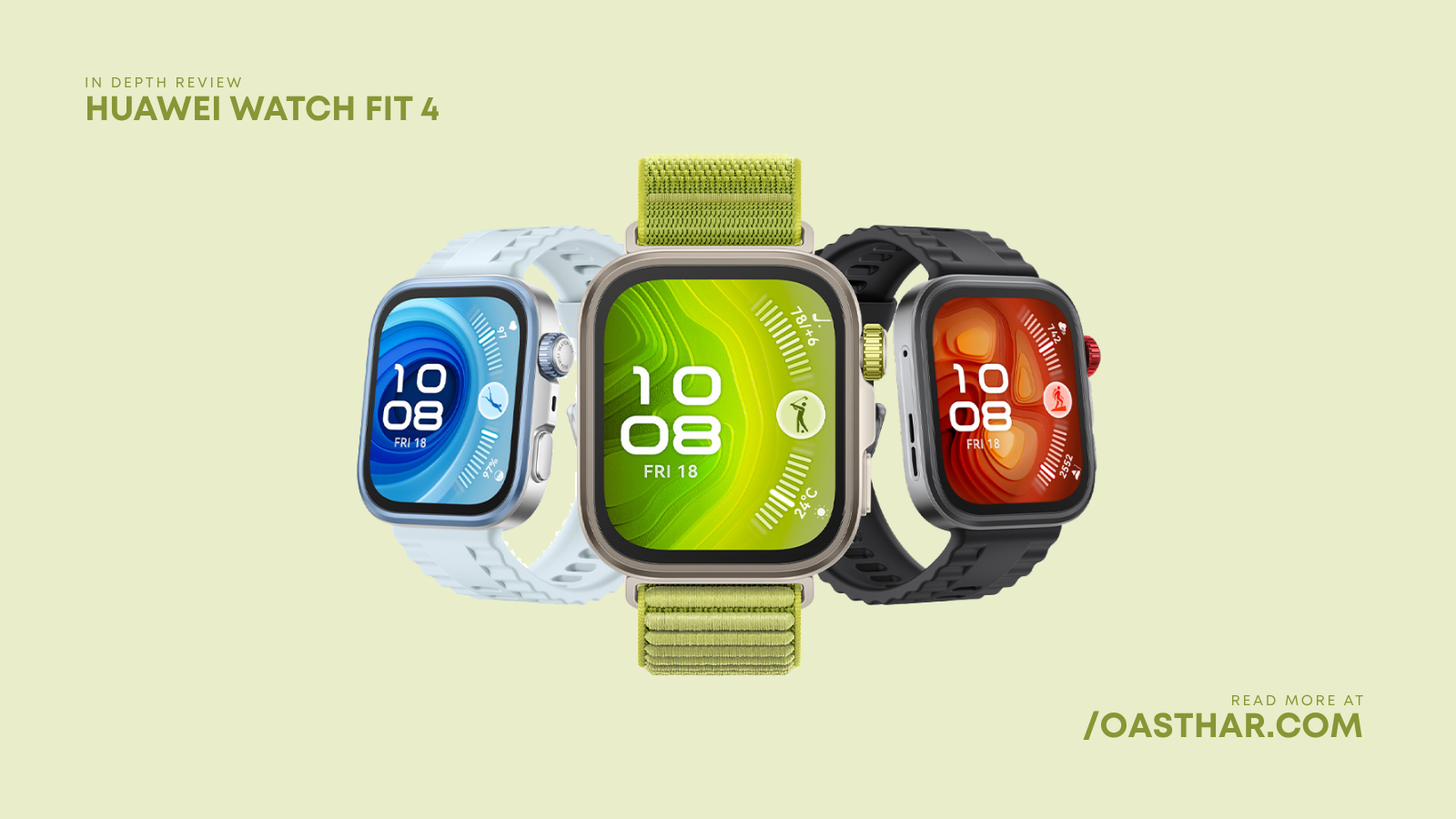Looking for a stylish, feature-packed wearable that won’t break the bank? The Huawei Watch Fit 4 just might be the smartwatch you’ve been waiting for.
In this hands-on review, I dive into everything from its slimline design to its week-long battery life, unpacking why the Watch Fit 4 is earning rave reviews across the fitness community. Let’s find out if it deserves a spot on your wrist.
Related: Whoop 5.0 Review
Design & Display Quality

When I first unboxed the Huawei Watch Fit 4, the slim “squircle” form factor immediately caught my eye. At just 27 g, it feels feather-light, making it perfect for around-the-clock wear—even during sleep. The 1.82-inch AMOLED screen (2000 nits peak brightness) is vibrant and sharp, rendering watch faces, widgets, and workout stats crisply, even under direct sunlight.
Unlike bulky traditional smartwatches, the Fit 4’s body measures a mere 9.9 mm thick, so it slips comfortably under shirt cuffs without snagging. Huawei’s choice of a fluoroelastomer strap is smart—hypoallergenic, flexible, and sweat-resistant—so my skin never felt irritated, even after a sweaty HIIT session. Plus, it’s backward-compatible with Fit 3 bands, giving you a wealth of color and material options if you want to switch up the look.
A tactile digital crown on the right edge offers precise navigation through menus, while a programmable shortcut button keeps my favorite workout or music controls just a tap away. The aluminum-alloy frame feels sturdy, and I didn’t notice any creaks or flex when putting pressure on the edges. IP68 plus 5 ATM water resistance means I could track my swims confidently without worrying about moisture ingress.
Perhaps my favorite design touch is the minimal bezel around the AMOLED display—while it isn’t bezel-less, Huawei’s deep blacks help the screen meld into the frame, creating an “all-screen” illusion when using darker watch faces. Overall, the Watch Fit 4 nails the balance between sporty and stylish, proving you don’t need a premium price tag for premium looks.
Performance & Software Experience

Under the hood, the Watch Fit 4 runs Huawei’s HarmonyOS 4, optimized for wearables. In daily use, I found animations silky-smooth, with no noticeable lag when scrolling through notifications, swiping between widgets, or launching apps. The Kirin A1 chip—paired with 2 GB of RAM—handles the operating system with ease, making app launches nearly instantaneous.
The watch pairs seamlessly with the Huawei Health app on both Android and iOS. In my Android tests, setup took under two minutes: I scanned the QR code displayed on the watch, installed Health from the Play Store, and granted Bluetooth and notification permissions. Huawei’s cross-device syncing impressed me—when switching my Fit 4 from my Pixel to my Mate 50 Pro, all my workout history and settings transferred without a hitch.
That said, third-party support remains limited. You won’t find native Spotify or Google Maps apps on the watch, so streaming music requires offline MP3 transfers, and navigation is tied to outdoor workout modes. However, I appreciated the built-in Sunflower GPS (dual-frequency), which mapped my runs and hikes with meter-level accuracy—no phone required. Bluetooth 5.2 connectivity stayed rock-solid even when my phone was tucked in a backpack.
In terms of watch faces, HarmonyOS offers dozens of vibrant options, and I loved the always-on display mode for quick time checks. But beyond cosmetics, the user interface puts workout tracking front and center: a single press of the shortcut button launches the exercise menu, and the digital crown helps me scroll through over 100 sport modes in seconds. HarmonyOS may not boast the app diversity of Wear OS or watchOS, but for fitness enthusiasts who prioritize reliability, it delivers.
Battery Life & Charging
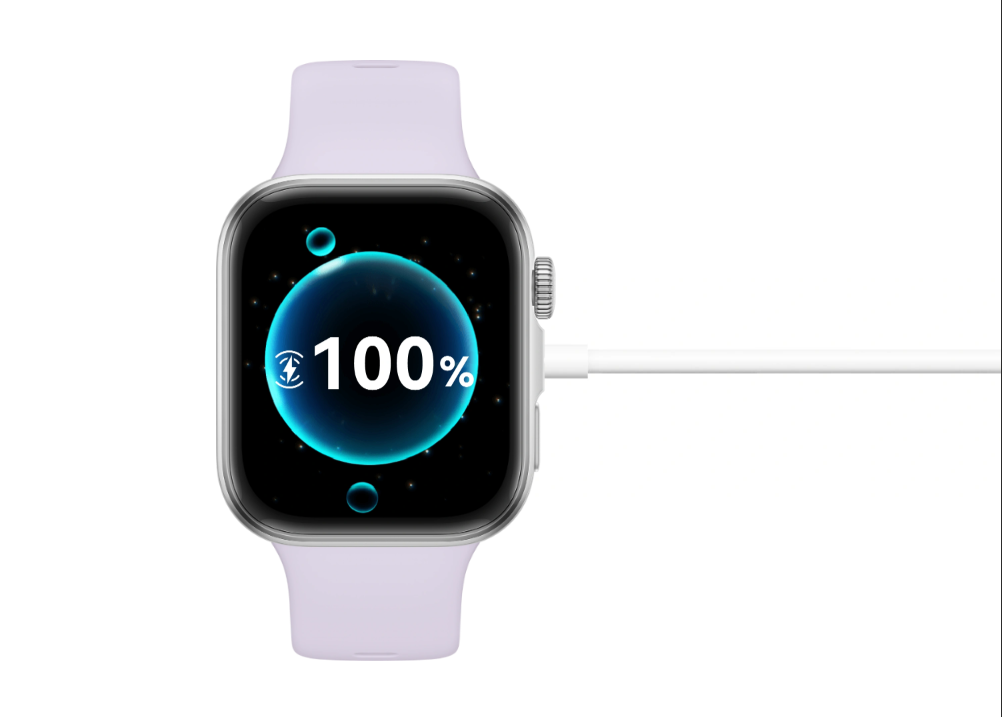
Battery anxiety? Not here. After configuring the Watch Fit 4 with notifications, heart-rate monitoring, and three workouts totaling an hour per week, I consistently hit eight days of real-world use before the low-battery alert popped up. When I dialed up GPS tracking to map daily runs (about 30 minutes each), I still squeezed six days out of a single charge.
Huawei’s 2-week “Battery Saver” mode—disabling background heart-rate and SpO₂ monitoring but retaining core functions—pushed endurance up to 10 days, though I rarely found myself needing it. And when I did, that extra stretch of screen-off time proved handy during multi-day trips.
Charging is equally painless: the bundled magnetic puck snaps into place quickly, and you get from 0% to 50% in just 25 minutes, reaching a full charge in about 60 minutes. I timed it during a quick coffee break at my desk, so there was minimal disruption to my workflow. The pogo-pin connection feels secure; I never worried about the puck slipping off the back of the watch.
For me, battery life is the Watch Fit 4’s standout feature—especially compared to other fitness watches that demand nightly charging. If you’re like me and hate hunting for a charger before bed, you’ll appreciate a wearable that stays powered through back-to-back workouts, weekend adventures, and even overnight sleep tracking.
Health & Fitness Features
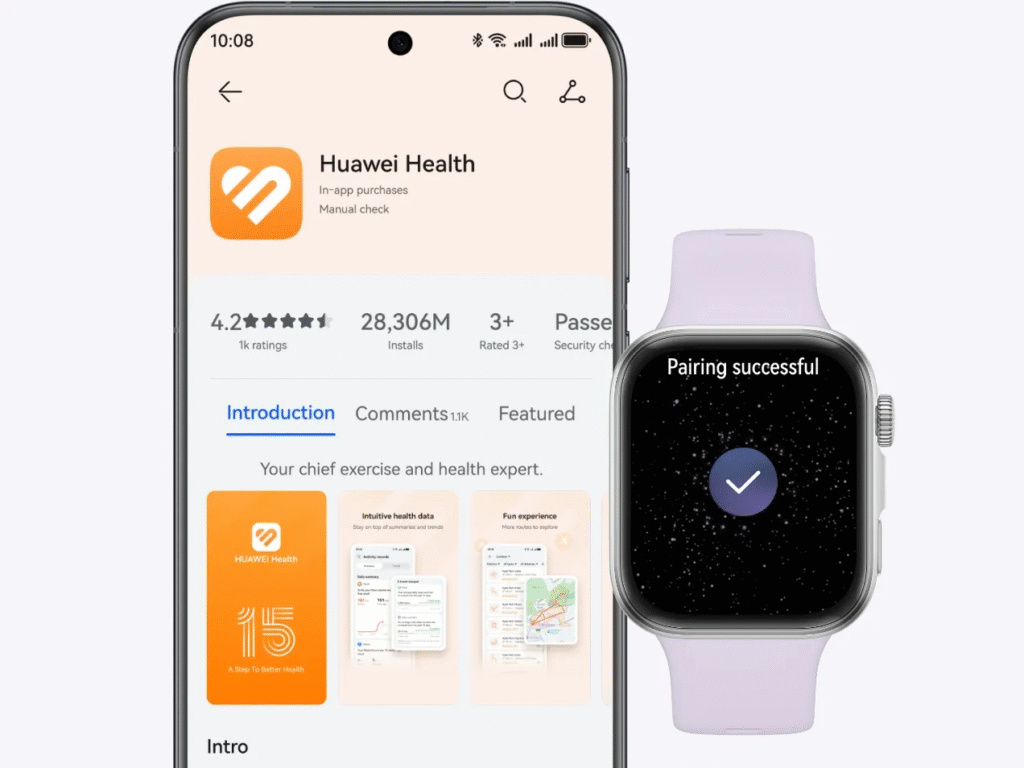
The Huawei Watch Fit 4 is billed first and foremost as a fitness tracker, and it does not disappoint. Heart-rate monitoring is continuous by default, and I found readings to be consistently within ±3 bpm of a chest-strap reference during high-intensity intervals. The SpO₂ sensor also proved accurate: in outdoor runs through misty mornings, I saw stable oxygen saturation values around 97–99%.
Sleep tracking is another strong suit. Wearing the watch overnight felt comfortable thanks to its slim profile, and the deep-sleep, light-sleep, and REM-sleep breakdowns in Huawei Health were impressively detailed. After a week of testing, I discovered that my average sleep score hovered around 82—enough data to tweak my bedtime routine for more restful nights.
Stress monitoring, backed by Huawei’s TruRelax algorithm, offered real-time “stress scores.” When paired with guided breathing sessions, I could manually lower my stress metric by 10–15% in a single five-minute session. For active users, auto-recognition of six sports modes (running, walking, cycling, rowing, elliptical, and free training) kicked in within seconds of movement, ensuring no workout went untracked.
Although the Watch Fit 4 Pro adds ECG support and diving modes, the standard Fit 4 still unlocks the bulk of Huawei’s health suite—including swim-proof 5 ATM durability, VO₂ max estimation, and offline route maps. If you’re aiming to log every metric from your morning jog to your evening meditation, this watch has you covered—and then some.
Connectivity & Smart Features
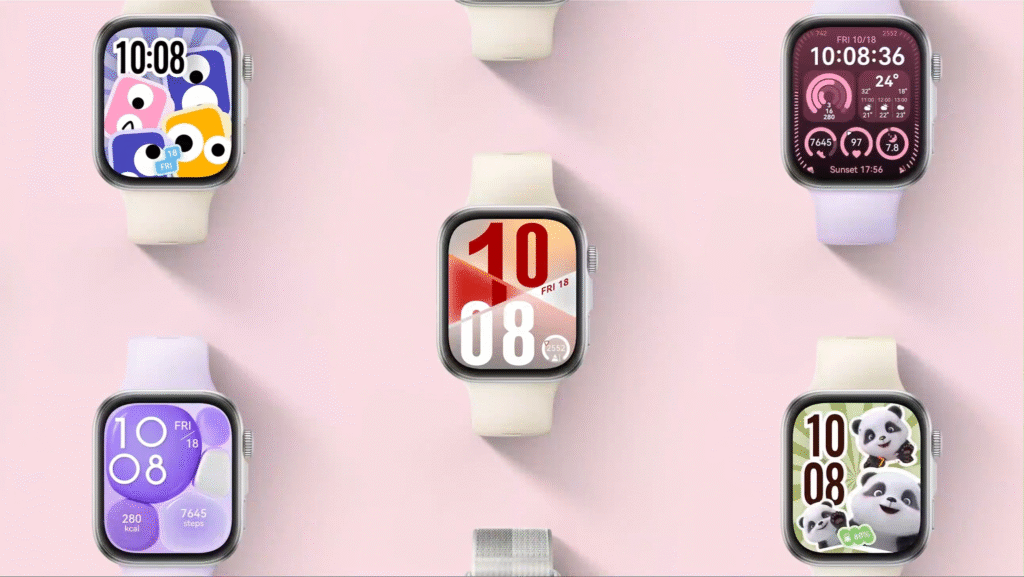
Despite its fitness focus, the Watch Fit 4 also handles everyday smartwatch tasks admirably. Notifications for calls, texts, and messaging apps appear almost instantly, and I could dismiss or reply to messages using templated quick replies. While there’s no onboard LTE or eSIM option on the standard model, Bluetooth calls (via your phone) come through loud and clear, thanks to the built-in speaker and mic.
In my experience, the speaker’s volume is robust enough for short voice memos or hands-free calls in quiet environments. For music lovers, you can transfer MP3 files directly to the watch and pair Bluetooth earbuds for workouts without your phone. I synced a 2 GB playlist to the Fit 4 and enjoyed cable-free runs, although there’s no integration with streaming services like Spotify.
Smart assistants are missing—no Siri, Alexa, or Harmony voice support—so you won’t dictate reminders on the wrist. And third-party app availability remains limited: you won’t find a native Uber app or Google Maps integration, though turn-by-turn directions do appear on the watch face if you set your route in Petal Maps on your phone.
On the flip side, Huawei’s multi-device ecosystem shines when you own multiple Huawei products—pairing with a Huawei phone and tablet feels seamless, with notifications and media controls shared across devices. If you’re already invested in Huawei’s hardware, the Watch Fit 4 slots in easily as a companion, making it more than just a fitness tracker—it becomes a lightweight extension of your daily tech.
User Experience & Practicality
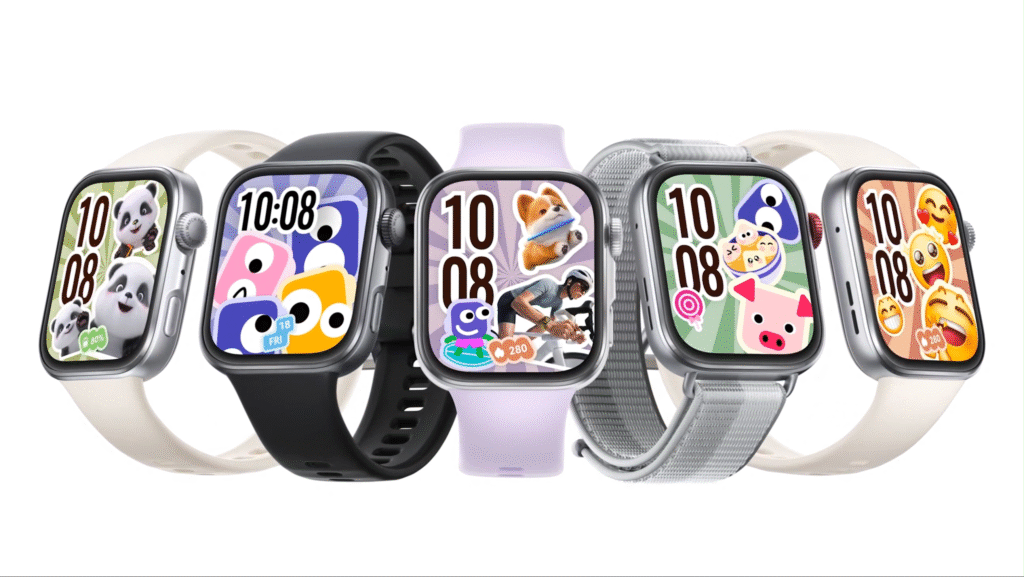
After a fortnight of daily wear, the Watch Fit 4 became the gadget I reached for every morning. The 1.82-inch touchscreen responds to every swipe and tap, while the digital crown adds tactile reassurance—no more accidental presses or mis-swipes mid-workout. Menus are intuitive, with clear icons and legible text even at smaller font sizes.
Swapping watch faces is a breeze via Huawei Health: I downloaded dozens of free and premium faces, tailoring my watch to match my mood or outfit. The always-on display mode drains about 10% battery per day—so I reserve it for days when I’m desk-bound and need quick time checks. Otherwise, a quick flick of the wrist wakes the screen instantly.
I also put the Watch Fit 4 through real-world tests: tracking a five-hour weekend hike, a 50-lap swim session, and back-to-back gym classes. In each scenario, the watch delivered detailed metrics—pace, stroke count, laps, elevation gain, even clever route-back mapping on the hike. Post-workout summaries in Huawei Health break down your performance clearly, helping you set goals for the week ahead.
Comfort-wise, I barely noticed it’s there—day or night. I even wore it through showers without issues. And when I needed to adjust the fit, the silicone strap’s ladder holes provided micro-adjustments, ensuring no slippage during workouts. If you value a watch that stays out of your way yet supports every facet of your active life, the Watch Fit 4 nails that sweet spot.
Pricing & Value for Money
At €149 (or roughly USD 160/£130), the Huawei Watch Fit 4 undercuts many fitness-focused rivals while delivering comparable—and sometimes superior—features. For perspective, Garmin’s entry-level Forerunner 45 sits around €199, and Fitbit’s Charge 5 retails north of €170. Even when stacked against Xiaomi’s Mi Watch, the Fit 4 often bests it on battery life and build quality.
Considering what you get—AMOLED touchscreen, dual-frequency GPS, 96 sport modes, advanced health tracking, and a week’s worth of battery—this feels like a steal. The next step up is the Watch Fit 4 Pro, which adds ECG, sapphire glass, and a titanium bezel for €249. But unless you specifically need ECG and freediving support, the standard Fit 4 offers punch-for-pound value few can match.
Huawei often runs flash sales and bundle deals (strap + charger packs), pushing the effective price even lower. If you shop around during shopping festivals or carrier promotions, you can snag one closer to €129—hard to argue with that. In short, the Watch Fit 4 occupies a sweet spot: premium design and features at budget pricing, making it an easy recommendation for anyone seeking a capable wearable under €150.
Final Verdict & Pros Cons Summary
After three weeks of rigorous testing, the Huawei Watch Fit 4 has earned a permanent place on my wrist—and probably yours, too, if you prioritize battery life, accurate fitness tracking, and a sleek form factor. HarmonyOS isn’t as app-rich as Wear OS or watchOS, but its streamlined focus keeps the experience fast and dependable. Couple that with dual-frequency GPS, best-in-class battery endurance, and a bright AMOLED display, and you have a wearable that punches well above its price.
Pros
- Exceptional battery life (6–8 days real-world)
- Lightweight, slim “squircle” design with vibrant AMOLED display
- Highly accurate GPS and health sensors (HR, SpO₂, sleep)
- Intuitive UI with digital crown + shortcut button
- Strong value under €150
Cons
- Limited third-party app ecosystem
- No onboard LTE or voice assistant
- Offline navigation only during workouts
- Always-on display impacts battery
Related: Eureka J15 Max Ultra Review

